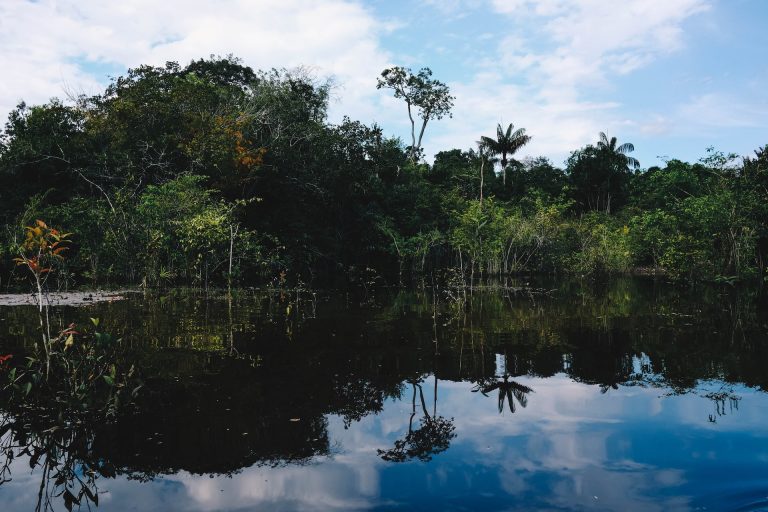
Rare Animal Species in Latin America
06 January, 2025Latin America is a land of jaw-dropping biodiversity. Stretching from Mexico down to the southern tip of South America, this region is home to lush rainforests, high-altitude mountains, deserts, and everything in between. But what steals the show is the wildlife, particularly the rare and extraordinary animals that call this part of the world home. Whether you’re a nature newbie or just curious about some of the planet’s most unique creatures, let’s dive into a beginner-friendly guide to Latin America’s rarest animal species.
Axolotl: The “Smiling” Salamander
Hailing from the lakes near Mexico City, the axolotl (pronounced “ax-oh-lot-ul”) is a critter. It’s often called the “Mexican walking fish,” but it’s not a fish, it’s a salamander. What makes the axolotl so unique is its ability to stay in its larval stage for its entire life. Imagine a tadpole that never grows into a frog!
Axolotls also have a superpower: they can regenerate limbs, tails, and even parts of their heart and brain. Unfortunately, pollution and habitat loss have pushed this little smiley-faced amphibian to the brink of extinction in the wild. The good news? Axolotls thrive in captivity and are prevalent in aquariums worldwide.
Pink River Dolphin: The Amazon’s Gentle Giant
Swimming through the Amazon River is a creature that looks like it swam out of a dream: the pink river dolphin. Unlike the dolphins you’ve seen at the beach, this freshwater species has a unique pinkish hue, especially in males. Their colour gets brighter with age, making them one of nature’s most fabulous glow-ups.
These dolphins are incredibly intelligent, using sonar to navigate the murky waters of the Amazon. Sadly, they face threats from deforestation, fishing nets, and pollution. Efforts to protect their habitats are underway, but there’s still a long way to go. Do you love animals? Try some animal games at Dragon Slots and earn real money now.
Andean Condor: The Sky’s Heavyweight Champion
You might glimpse one of the world’s largest flying birds in the high Andes mountains: the Andean condor. With a wingspan of up to 10 feet, these majestic creatures are built for soaring, often gliding for hours without flapping their wings.
The Andean condor plays a crucial role in its ecosystem by scavenging carcasses, acting as nature’s cleanup crew. While these birds are symbols of power and freedom in South American culture, habitat destruction and poisoning have led to a decline in their numbers.
Glass Frog: The Transparent Wonder
Imagine a frog so clearly that you can see its insides. That’s the glass frog found in the rainforests of Central and South America. These tiny, lime-green frogs have skin on their bellies that’s almost entirely transparent, giving you a peek at their organs.
Glass frogs are masters of camouflage, blending seamlessly with leaves to avoid predators. However, deforestation threatens their habitat, making them harder to find—not just because they’re good at hiding.
Spectacled Bear: Paddington’s Real-Life Cousin
The spectacled bear is the only bear species native to South America, famously inspiring the beloved Paddington Bear character. These shy, tree-climbing bears get their name from the white markings around their eyes, which look like glasses (or spectacles).
In the Andes, spectacled bears are herbivores that love munching on fruit, cacti, and even the occasional termite. Habitat loss from agriculture has put them at risk, but conservation efforts give them a fighting chance.
Potoo: The Master of Disguise
If you’ve ever walked through a Latin American forest and thought a tree branch blinked at you, it was probably a Potoo. These nocturnal birds are experts at blending into their surroundings, resembling dead branches during the day.
Potoos are famous for their haunting calls, which echo through the night like something out of a spooky movie. While not endangered, their elusive nature makes them a rare treat for birdwatchers.
Giant Armadillo: The Tank of the Amazon
The giant armadillo is precisely what it sounds like: a big, armoured animal that looks like it belongs in a prehistoric movie. Found in the Amazon rainforest, these nocturnal creatures dig massive burrows and feast on termites and ants.
With their rugged, protective shells and powerful claws, giant armadillos are built to survive. But habitat destruction and hunting have caused their numbers to drop, making them a rare sight in the wild.
Follow Sounds and Colours: Facebook / Twitter / Instagram / Mixcloud / Soundcloud / Bandcamp
Subscribe to the Sounds and Colours Newsletter for regular updates, news and competitions bringing the best of Latin American culture direct to your Inbox.

